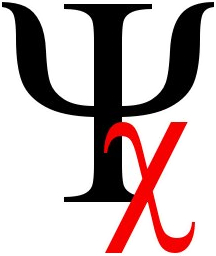The Letter
of Law and
the Law
of the Letter
From Orthographic Editor
Orville Graff
In the torrential e-maelstrom that is 21st-century online communication, where e-mails fly whither and hence and hyperlinks redefine the very essence of text, it is easy for the average, run-of-the-mill, caught-up-in-his-or-her-own-world everyday-regular global citizen to forget any one or more of at least three things:
- What they had for breakfast
- Why they bothered getting married and having kids
- The letter
Let (1) and (2) be for the philosophers—do your worst, guys! (3), however, will occupy both us and Wall Street for, well, a few more letters. Note them, reader. They’re quirky little beasts. See how they double up as in letter or cavort anti-phonetically in the most obscure and unpredictable ways: ⟨ea⟩ in head, heart and heal to take an off-the-shelf example. And that’s just English! If we move southeast from Kent, where the first known abugida was discovered in 1843, the letters of continental Europe puzzle and perplex even more. With accents aplenty above and below, scarce one continental European language has divested itself of the paraphernalia of diacriticality.
|
|
 Susan L. Cutter, 2003, “The Vulnerability of Science and the Science of Vulnerability,” Annals of Association of American Geographers, 93.1, pp. 1–12.
Susan L. Cutter, 2003, “The Vulnerability of Science and the Science of Vulnerability,” Annals of Association of American Geographers, 93.1, pp. 1–12.
Chiasmus of the Month
July 2025
|
|
|
|
|
We could go on, journeying into syllabaries and logographs. And then beyond into the meta: the formatting and fonting of the inscrutable letter which, ever context-dependent in its deceptively 2D ‘reality’, demands as much Saussurian systematicity as the all-too-familiar sign—which is itself nothing more than a blustering clustering of letters. But we won’t; it’s nearly tea-time after all. Yet we do learn this: if linguistics is anything (and it isn’t), it is not merely in the letter, but of it, from it, and most probably by it and indeed for it.
To this end, this issue has been written specially in letters. We’ve used nearly all of them and not a few twice or more. What’s more, many of the linguimericks in this issue are, mind-rotatingly, all about letters. Read em’; you’ll see! For your protection, we’ve even omitted the regular Letters to the Editor page to prevent hitting you with a double whammy of letter polysemy.
So, when all is said and done, let us be leaders in respect of letters. Where there are letters, let us lead others to them. Let us eat lettuce and send letters. Light us, letters, in our leaden fetters—and may all eleven lovely letters of linguistics (with two pairs of repetitions) keep you safe, merry and entertained this night and for evermore.

